Specialists - Year 5 & 6 Week 3
Week beginning - 27 April 2020
If you want to see last week's Specialist pages again, click here.
P.E.
30-45 minutes per day
Monday
Warm-up - Turn up the Bass
Click here for Go Noodle ‘Turn up the Bass’
Sportsmanship Activity

Tuesday
Warm-up - Fast Feet
Click here for Go Noodle ‘Fast Feet’
Cup stacking
*If you don’t have any of these cups in the video you can use any foam cups from the supermarket and colour them.
#1 Two colour shuffle Click here
Wednesday
Fitness Monopoly
Click here for fitness Monopoly
Thursday
Warm up -
Time how long you can hold the plank position.
To hold the plank position, start by lying flat on your tummy, lift your body off the ground so your forearms and toes are on the ground, holding your body up.
Keep your body in a straight line.
(Mrs Yue-Lamb can hold for 1 minute and 5 seconds, Mr M can hold for 1minute and 25 seconds).
Write your time down with the date and compare it for next time.
Keepings off - *If you don’t have a partner you can play Target Kick below.
You will need a sibling, friend or adult to play this game with you (no pets allowed :)).
With a soccer ball (or any ball you have) - play 1 on 1 and try to keep the ball close to your feet.
Do not allow the other person (defender) to get the ball off you!
Change over to give the other person a turn.
You can always add in a goal to score a point in.
Change to 2 on 1 or 2 on 2 as a progression, if there are more people to play.
What do you do with your body when someone is trying to defend you/get the ball from you?
How do you keep control of the ball?
Target Kick
Place some targets on the ground in different playing positions e.g. plastic bottles, teddies, food containers etc.
Underneath each object place one card (eg. you could use a deck of cards, or make up a set of cards with numbers on them).
Your goal is to collect all the cards from underneath the objects, which you do when you hit the target.
Mark a starting line/point like a penalty spot which is where you start each kick from.
Modifications - If you have someone else who can play with you, take turns in kicking to hit a target and see who can score the most number of points on the cards. You could play first person to get X amount of points.
To make it easier or more challenging, move closer or further away from your targets.
Was your game easy or difficult?
What would you change to your game to make it more enjoyable/harder?
How did you change your kick when you found you weren’t hitting the target?
Friday
Warm up challenge - How many squats can you do in 1 minute?
Remember when doing your squat, keep your feet shoulder-width apart, keep your back straight and pretend to sit down on a chair.
Try and get as low as you can before you lose balance and then spring back up.
(Mrs Yue-Lamb can do 48 squats and Mr M can do 47).
Write down your score with the date and compare it for next time.
Crab Soccer *If you don’t have a partner you can play Soccer Wall Tennis below.
Mark out a playing area with a goal at each end.
To start, sit and push up in the ‘crab’ position, with only your hands and feet touching the floor.
Then while moving the ball, score a goal by kicking the ball into the goal.
Modifications - If you can play against someone play 1 on 1 or 2 on 2. The aim is to score more goals than the other player or team. Use only your right or left foot. Make the goals smaller or larger.
How do you keep your balance when kicking the object?
Which muscles do you use to keep your tummy up?
Why might they get tired?
Soccer (wall) Tennis
Use a soccer ball or light plastic ball.
Draw (tape) a line on the wall or fence – start with a low line then make it higher as you improve. Kick the ball above the line, control the rebound and repeat.
A point is awarded each time you can repeat this. When you can do five in a row (kick, control, kick again) try and kick continuously without stopping the ball.
Modifications - Change the height of the line or distance you stand from the wall.
Change the type of ball you use.
If there is another player see how many points you can get in a row playing together.
Spanish
30 minutes per week
Mi Horario Seminal (My Weekly Schedule)
Create a timetable to help you manage your Learning from Home time. Try to use as many Spanish words as you can.
If you already have a timetable, see if you can translate it to Spanish. (Señora Mason would love to see these!)
Include days and times in your timetable.
Remember that days of the week in Spanish do not use capital letters!
Vocabulario:
Days of the week- lunes (Monday), martes (Tuesday), miercoles (Wednesday), jueves (Thursday) and viernes (Friday).
Subjects- La biblioteca (Library) Música (music), arte (art), español (Spanish), educación física (physical education), matemáticas (mathematics), escritura (writing), lectura (reading), investigación (Inquiry)
Music
60 minutes per week
Create a poster for you to use during your music lessons at home. It will be a helpful reminder of musical words in future lessons.
Draw some pictures and write an explanation of the following words we use in music.
I have included an explanation for each word, but I would like you to put some of them into your own words or explanations.
Please keep these posters as I'd like to display some of them in our classroom.
Year 5:
Beat - the pulse (like our heartbeat) in the music. It stays steady throughout a song
Rhythm - the sounds and silences on a beat.
- Ta = 1 sound on the beat
- Ti ti = 2 sounds on the beat
- Saa = no sound on the beat
- Tika tika = 4 sounds on the beat
- Ti tika = 3 uneven sounds on the beat, the last 2 sounds are faster than the first
- Tim ka = 2 uneven sounds on the beat, the first longer than the second
Ostinato - a repeated pattern in music
Bordun - the beat played as a chord. Usually on a xylophone
Tempo - the speed of a song.
- Allegro = fast
- Andante = walking pace
- Largo = slow
Dynamics - how loud or soft the music is played.
- Fortissimo = very loud
- Forte = loud
- Mezzo Forte = moderately loud
- Mezzo Piano = moderately soft
- Piano = soft, Pianissimo = very soft
- Crescendo = gradually getting louder
- Decrescendo = gradually getting softer
Melody - the sequence of notes that make up a song.
- La = our high sound (broken love heart)
- Sol = a step below ‘la’ (gate)
- Mi = a skip below ‘sol’ (magic carpet)
- Re = a step below ‘mi’ (roof)
- Do = our lowest sound/home base (muscle!)
Instrumentation - the instruments we hear in a song
Texture - the number of parts in a piece of music (thick = lots of sounds at once, thin = 1 or few sounds playing the same thing)
Form - the structure of the music. We use letters to show the different parts (e.g. ABA - Ternary form)
Mood - how the music makes you feel
Genre - the style of a piece of music
Year 6:
Beat - the pulse (like our heartbeat) in the music. It stays steady throughout a song
Rhythm - the sounds and silences on a beat.
- Ta = 1 sound on the beat
- Ti ti = 2 sounds on the beat
- Saa = no sound on the beat
- Tika tika = 4 sounds on the beat
- Ti tika = 3 uneven sounds on the beat, the last 2 sounds are faster than the first
- Tim ka = 2 uneven sounds on the beat, the first longer than the second
- Tam ti = 2 sounds over 2 beats, the first being 1.5 beats, the second 0.5 of a beat
Ostinato - a repeated pattern in music
Tempo - the speed of a song.
- Allegro = fast
- Andante = walking pace
- Largo = slow
Dynamics - how loud or soft the music is played.
- Fortissimo = very loud
- Forte = loud
- Mezzo Forte = moderately loud
- Mezzo Piano = moderately soft
- Piano = soft, Pianissimo = very soft
- Crescendo = gradually getting louder
- Decrescendo = gradually getting softer
Melody - the pitch we sing or play
Genre - the style of a piece of music
Instrumentation - the instruments we hear in a song
Texture - the number of parts in a piece of music (thick = lots of sounds at once, thin = 1 or few sounds playing the same thing), Layers of sound = the music played by 1 instrument. The beat, rhythm and ostinato are different layers of sound
Timbre - the character of an instrument or music (e.g. light, rich, calm)
Form - the structure of the music. Call and Response = when a phrase is first played or sung (the call), the response phrase after is always the same (e.g. John Kanaka, Banana Boat song)
Mood - how the music makes you feel
Art
60 minutes per week
Year 5
Doodle Art
Look at the images below.
Can you see how the artists have used pattern and line to create movement, 3D forms, texture and tone?
Copy to practise some of these skills in your book or on a clean page.
Try a 3D letter by using the examples below.
Now add some tone, movement or texture to your letter using pattern, shading or bent lines.
Start your art work with a clean piece of paper or page in your book. You will also need blu-tack or similar to safely fix it to a wall, if you decide to do it that way. You can also doodle on a flat table surface.
You can do a small, individual piece.
Or you may like to begin a collaborative work with your family and tape pages together to form a long work. The one in the pivcture below is huge!
If you are joining pieces of paper, make sure your tape is on the back and your joins are tidy.
If your work is large you will need to negotiate floor or wall space with parents and decide if the work will be rolled up or remain blu-tacked to the wall.
You will need black pens of different sizes, ball point pens, fine-liners, sharpies. Markers are best, but you can also use pencil if necessary. (Make sure you check this with your parents - they probably wouldn't want an imprint on the wall after you remove your art work).
It looks best if everyone uses the same colour.
Decide on a theme for starting your work. This may change over time or as family members add to the work.
Return to this work from time to time until the page is slowly filled with moving forms, patterns, texture and 3D shapes.
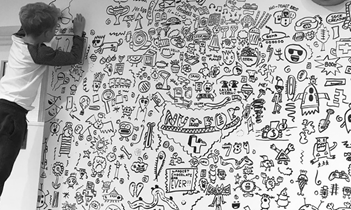
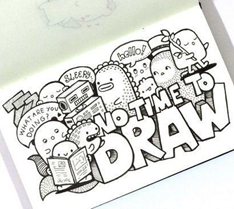
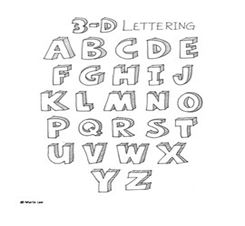
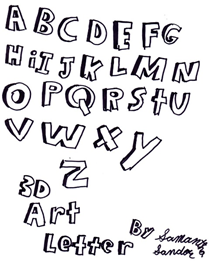
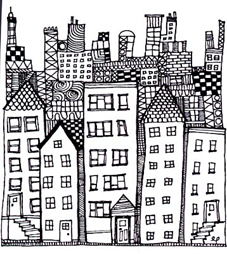
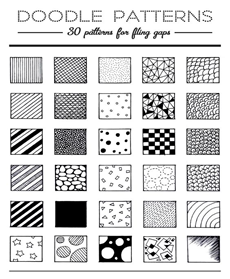
Start collecting small boxes, pieces of clean plastic, packaging, string, wire and old toys or machinery, for a construction project coming up.
Year 6
Painting or completing your skateboard design with colour
Reflection
Use a diagram to reflect on your work at this stage. If possible, take a photo of your board so far and print it out, or make a rough sketch of your board. Use arrows or speech bubbles and write some notes that answer the following questions:
- What will you be doing next? Remember your original goals.
- Are you on track with your design, or have things changed?
- Are there some areas that need a textured layer, cleaner lines or better colour variations? The best thing about painting is that you can paint over areas and make things better, when your paint is dry. Be resilient, and fix areas you are unhappy with, by identifying the problem and working over the dry paint.
- Are you managing to apply the paint the way you want it?
- Do you need to apply a second coat or use a better brush for the job?
- Perhaps your second coat will have some colour variation and you can leave a little of the previous colour coming through, for depth. Describe a little about the painting process you are going through.
- Is your design influenced by a particular artist or artwork that you found?
- If so, what did you like about that artist's work? Record the name of the artist and title of the work. If possible, glue printed copies of works that inspired you into your Art book.
If you don’t have a skateboard at home and you have been painting on paper, you can still complete this reflection.
If you have finished your skateboard painting this week, you may do a painting of your choice on a page in your book.
Remember to make use of what you have learned. Consider how exploring the elements of design can improve your painting.
You may like to copy an artwork that you find.
Copying an artist can help you learn different skills and give you new insight.
Look for artworks in books and on book covers.
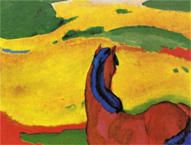
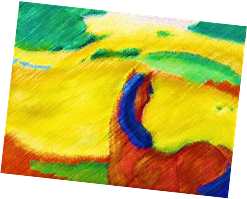
Start collecting small boxes, pieces of clean plastic, packaging, string, wire and old toys or machinery, for a construction project coming up.
Library
30 minutes per week
Read an ANZAC day newspaper article of your choice or watch the video ‘Remembering World War 1’ Click here
Create a Wordle.
A Wordle is a visual display of words based around a specific theme.
The more important the word is to you the bigger the writing should be. See example below.
Use words that express your understanding and feelings about ANZAC day.
You can draw any shape that represents ANZAC day to write your words in. eg. a flag, a soldier’s hat, a cross.
Make your wordle bright and colourful.

Optional: Display all of the ANZAC work you have completed during Library lessons this term as a poster.
© Copyright Laburnum Primary School
